Recession & rising cost of paid channels
- Home » Recession and rising cost of paid channels
- Reading Time: 6 minutes
📧 Send me the PDF version
If you don't have time to read it through, download the PDF version
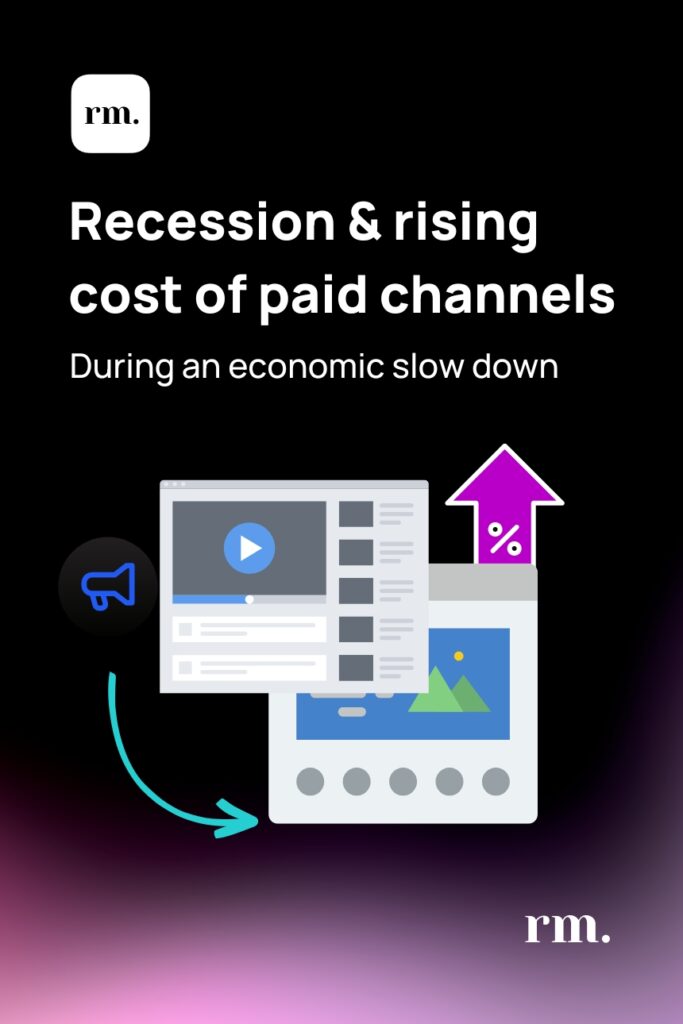
Economic crisis & rising Cost of paid adverting
The price of your everyday groceries is not the only thing that is going up. Paid ads campaign costs have also increased dramatically over the past few years. Higher privacy standards are making targeting and attributions harder than ever. While evolving buying journey of consumers has left many marketers thinking nothing seems to work as it used.
As an example, on average, Facebook ads’ CPM has increased by more than 23% since 2017 compared to 2021 (& we know for sure CPAs have only gone up since then!).
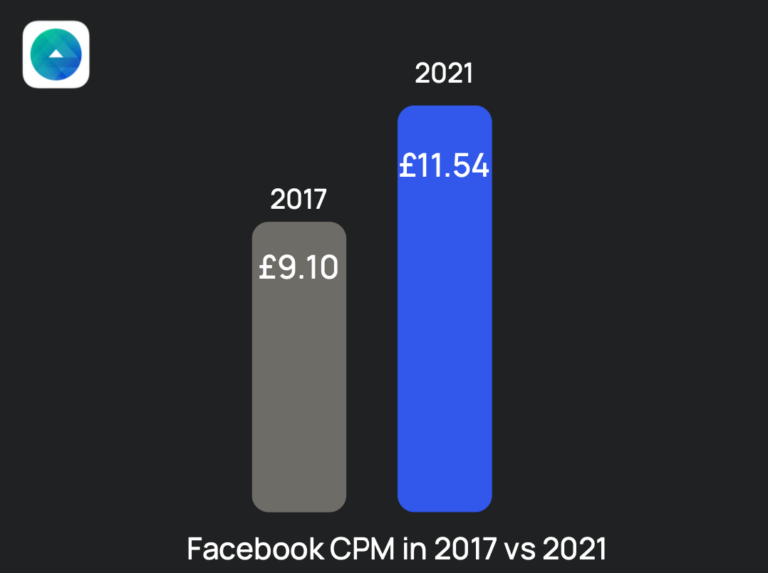
What are the main drivers behind this increased cost?
- Privacy standards and tracking issues (Apple privacy & 3rd party cookies phasing out)
- Complex user behaviour, using multiple devices and browsers (sometimes VPN & Adblockers)
- Different buyer journey compared to 8 years ago
- Over saturation of Paid platforms
- Businesses struggle to implement often complex solutions to tackle such issues.
Companies should increase their efforts in setup and tracking while receiving less ideal results from paid platfroms. However, that’s not the whole story; there is hope at the end of this tunnel!
Overcrowded platforms
Paid marketing channels have become more crowded, leading to increased advertising costs, while consumers are less engaged with traditional ad creatives or sales approaches. The proliferation of paid social ads has become its’ doom.
The more people found how easy it is to generate business on paid platforms; the more ads were served, reducing the overall effectiveness through ad fatigue. It’s good to remember that ad fatigue is not just exclusive to your videos or creatives. An average person might see 10-20 ads within 4 hours of social media use. Ads around similar topics could increase the overall topic level ad fatigue, which is not something easy to detect.
Increased number of touch points
Customers are also very selective about which ads they interact with or how much attention and intention they put behind watching them. On average, a prospect in the B2B sector would need around 8 touch points to be convinced to book a call with you.
That means more channels, more scattered data and less control over which channel did the trick. Add the looming recession, and before you know it, Karen is asking you to cut back on ad spend.
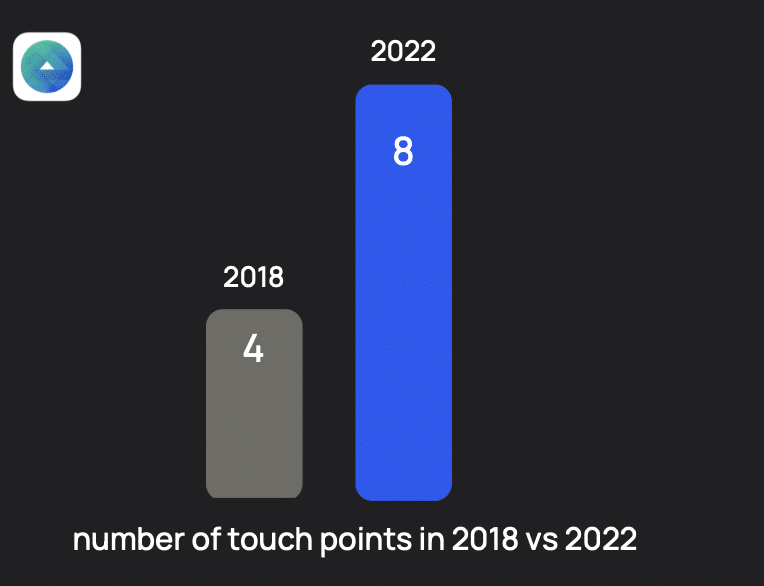
Beware of the demand capture habit; use sparingly!
Many small to medium size businesses tend to go for the “Low-hanging fruit”, “Quick-wins” or try “Optimising the budget for maximum return”. Although that strategy is a valid one and often necessary to keep the lights on, these practices become embedded in the company’s culture, spending habits and risk appetite. In other words, saving now might cost you more in the future.
There are only a limited number of ready-to-buy customers out there, and when that number goes down due to the seasonality or an economic shock, you’re left with no imminent choice to alleviate the issue.
Demand Gen Vs Demand Capture.
Before we dive into the solution, let’s discuss marketing from a different angle. You probably have heard various terms such as inbound, outbound, lead get, etc. In reality, there is only two things that really matter: Bring existing demand to your business (Demand Capture) and generate new ones for the feature!
Check out our guide on PPC Campaign Management for Small Businesses.
Demand Capture
Demand capture is a type of campaign designed to turn ready-to-buy prospects into paying customers. Imagine a Google ads campaign for a “Marketing agency in London”. The term ‘marketing agency’ and the presence of a local keyword indicate a level of interest in working with a marketing agency.
Demand Generation
Demand generation, on the other hand, is more about educating your target market to move them from being unaware (of your product) to ready-to-buy MQLs (Marketing qualified leads) & SQLs (Sales Qualified leads). Some Youtube ads, Linkedin and many paid social channels are among this category.
Although you can run conversion-driven campaigns on social channels, the main difference is that those users haven’t searched for your product at that moment in time (unlike Google ads), and the ad that was shown to them, basically interrupts the primary purpose of their app visit (watching cat reels on IG)
The solution
Demand generation campaigns educate your target audiences. They may first learn about the problem and its solution through your ads. Such brand placement will become crucial when your prospect is ready to buy and (unconsciously or consciously) search for you.
Investing in these types of campaigns may sound risky to finance or founders, but if done right, they help businesses have better continuity and face fewer fluctuations.
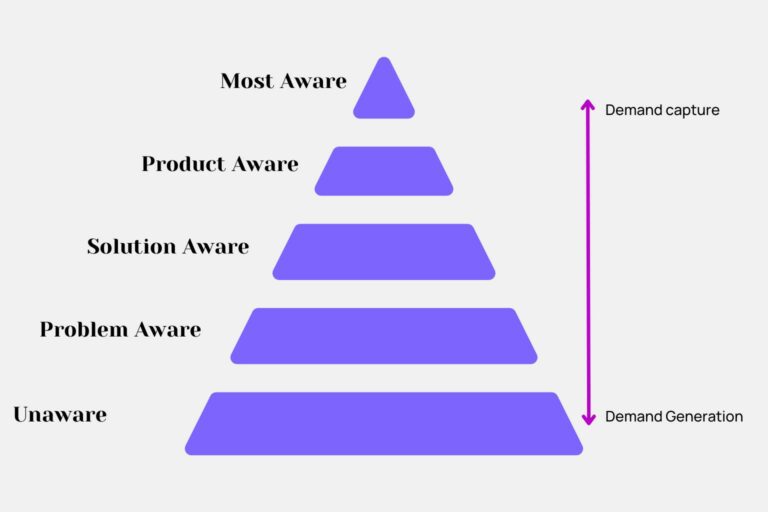
Discuss it with your team
There need to be conversations around more forward-looking campaigns geared towards demand generation instead of lead/customer generation. The main problem is these types of campaigns are harder to track and have a less immediate impact, but without them, you are more susceptible to economic shocks and, subsequently, a drop in ready-to-buy demand.
How can brand awareness impact your CTR & CPC?
You may be sceptical about all this, or probably have run some half-hearted campaigns and decided this won’t work for you. However, I’m here to say that there is a business case for getting it right!
A well-designed Demand Gen campaign will improve your CTR through brand lift and recall. Say you are searching for writing tools and have seen Grammarly’s ads on YouTube (Who hasn’t?!).
If you search for writing assistant tools, out of the top 3 ad spots, your eyes may automatically go toward the ad from the brand you have heard of before, Even if it’s placed in the 3rd or 2nd results. Higher CTR equals lower CPC.
The business case & hidden savings
The average CPV (cost per view) for 1000 YouTube videos is around 10 pence. If 5% click on your ads, you will end up paying around 50p per click, which means: £25 for 50 clicks. On Google ads, some terms could go as high as £60.
A lot of that will come down to your landing page quality, ad creativity and targeting. However, the chances are you could be saving money if you play your cards right!
One thing to consider is that making good creatives may initially set you back a few thousand pounds, but overall, when considered annually, there are savings.
Frequency & recency
Most Facebook or Google ads account managers will tell you a frequency of above 3 or 4 is considered high. However, given the low attention span of people, you should be really aiming for 8-9 within a four-week period, depending on the platform. This is different in non-skippable YouTube ads, so don’t go overboard with them!
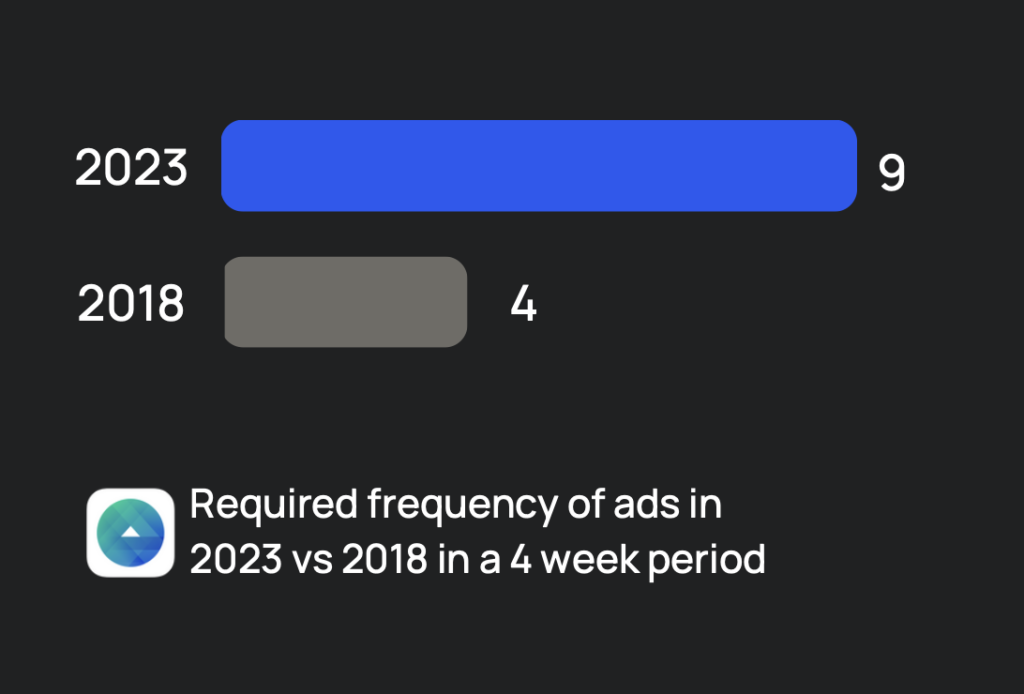
Relevant KPIs
Deman gen campaigns don’t result in MQLs and pipeline measures. Their effect is more subtle in the medium term. We use below items as an indication of their impact
- Brand recall surveys
- Google search console brand query reports and compare it in YOY time frame (Wait at least 4-5 months before even trying doing this),
- Review CTR and brand clicks.
- Analyse social media account searches and visits.
- Qualitative data (Feedback through the sales team)
- User-provided data when they signup (Least reliable of all, to be fair)
How to create a winning demand generation campaign
Our advice is to select one or two channels. For example, Linkedin & Facebook or Linkedin & YouTube. Develop native-looking ads (native relative to the platform) that aren’t pushing a product but a solution to a pain. You could promote your product or something of value to get a foot in the door.
Make sure to identify your ICP and create a clear and easy next step. That could be a guide, a blog, an un-gated ebook like this one or a webinar. You could also provide a free tool that is designed to solve some issues for your target market. Such a tool could be a calculator, a free plugin or anything relevant to your industry.
We hope this eBook provided some value to you.
